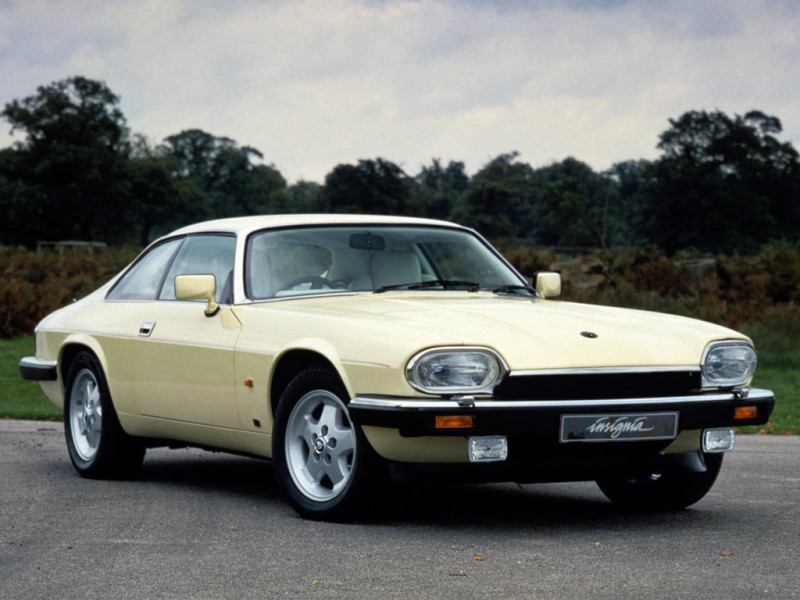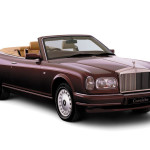
6 Grand Tourers You Need To Have A Road Trip With | Supercars Shopping
NEED TO DRIVE
6 Grand Tourers You Need To Have A Road Trip With
Words by Tommaso Mogge
Since the birth of the very first motor cars, mankind has thought of adding more and more things that would make their movements safer, more comfortable and later even more fun. To be honest, the story about fun on wheels has deep roots in the human spirit, a wonderful and contradictory creature that has often forgotten how easy it was to lose sanity in the unbridled race towards speed. We great grandsons thank ‘em all, because if today a common sedan can safely touch 250 kph, it is partly thanks to crazy geniuses who pursued a dream that would have changed the world of mobility (and not just that) forever. Soon, shortening the distances on the map and creating an increasingly dense network of roads, traveling has no longer only represented the need to move from one place to another, but has become a way to savor that desire for freedom that makes the human being one of the most curious animals constantly looking for inspiration in all that lies around. The engineering development has brought the remarkable improvements that have made history and the car has no longer held the role of transport, but of a real tool for the satisfaction of the most intimate personal needs. We can say that the so-called “Grand Tourer” were born just like that, within that desire to get out and drive: GRAND Tourer, precisely, because the common denominator would have been an engine capable of emotionally excite and please the hunger for curves on a long journey. This time we have chosen 6 GTs that we often tend to forget, looking back in time. These 6 share little between them, such as a generous engine located at front, but you can be sure that if you are lucky enough to experience a trip on one of them, you will no longer be able to do without it and then any excuse will be good to close the front door of your house and leave.
ASTON MARTIN DB7
Speaking of Grand Tourer, the Gaydon brand immediately comes to mind. I am sure that you will not have immediately thought about the DB7, a coupe based on the Jaguar XJ-S platform and unveiled at the 1992 Geneva Motor Show, immediately stealing the show and ready to enter into production with extraordinary expectations. Much of the credit is due to the likes of Tom Walkinshaw Racing (TWR) and the design of Ian Callum and Keith Helfet, but what the DB7 did was not just to launch another excellent Aston Martin for long distances and with an exciting line, it really saved the company, which thanks to Ford’s commitment (at the time owner since 1988) managed to fight for a segment partly obscured by the birth of numerous mid-rear engine supercars.
Initially fitted with the same 6-cylinder engine as the XJ-S – a 340-HP 3.2 cc – the DB7 is aesthetically updated in 1999, also welcoming a majestic 5.9 cc V12 with 420 horses. Undoubtedly it boasts qualities as an authentic grand tourer also thanks to an elegant passenger compartment drowned in leather, while at the turn of its last years of production, between 2003 and 2004, the DB7 GT was born. The last incarnation of the glorious coupe maintains the same heart under the bonnet, but delivers 435 hp, while it updates the aerodynamics and lines, which define the ideal springboard for the brand’s future. Also available as a convertible, called the Volante, the DB7 maintains an enviable charm that makes it one of the most iconic but at the same time less obvious GT you can find.
JAGUAR XJ-S
The unfortunate task of the XJ-S was to take up the baton from the world’s most beautiful car, the E-Type. It saw the light in 1975 and never had an easy life, a predictable situation in such circumstances. The fact is that the XJ-S was equally successful in bringing with it an avant-garde design for the era, with a long series of engines and variants for a total of over 115,000 units sold. Born on a shortened version of the XJ6 chassis, the XJ-S managed to exceed all expectations. Until 1983 it was available only with a 5.3 V12 which with the update of the second series delivered 295 horsepower, then flanked by a 6 cylinders version able to keep fuel consumption at bay – sort of – still maintaining that driving pleasure conferred to a car with generous dimensions and able to combine the best ride comfort with really interesting performance figures.
As mentioned, several versions were made available, which offered automatic or manual transmission, Spider variant, the powerful XJR-S with a 318-hp engine before and 334-hp later, or the one developed by Lister, with an extreme aerodynamics and a 7-liter grounding 496-horsepower. In case you had a tickle in your throat, I would recommend the third generation, the one introduced in 1991 and available with a 6-cylinder 6-liter or 4-liter V12, a cleaner line and better reliability on the mechanical side.
BENTLEY CONTINENTAL R
Sticking to the UK, we continue to talk about models that are not only grandiose to drive today as in the past, but that have also represented an important step for the brand. The Continental R was indeed the first Bentley branded model that did not have a Rolls-Royce counterpart model. Introduced in 1991 as a two-door coupe, it shared the 6.750cc turbocharged V8 with the Turbo R, but had a new 4-speed automatic transmission capable of handling the enormous power reserve consisting in 320 horses that became 385 with the Continental S. Finally, it was also available under the name of Continental T, the most performing model thanks to a lower weight, a 10-cm shorter wheelbase and 420 horses.
The Continental, at the beginning of the 90s, was a completely different car than the Conti GT introduced in 2003. Perfectly able to accommodate four people on board in a cockpit full of leather and wood, it is a car still aimed for true enthusiasts that even today prefer it to dozens of other valid alternatives for that grandeur flaunted by a design immediately recognizable and that leaves no room for doubts about the inheritance that follows.
ROLLS-ROYCE CORNICHE V
Just to create a bit of confusion, we decided to throw a Rolls in here as well. The Corniche V, produced only from 2000 to 2003, is actually the counterpart of the Bentley Continental as a cabriolet version, called Azure. You read that right, the version with a soft top existed for both brands and as far as RR concerned it was a matter of continuing the exclusive dynasty introduced in 1971 and updated through four generations until 1996. The Corniche V is not certain an easy car to find on the second-hand market, since only 374 units were produced at around $ 360,000 brand new, but you can bet its quality really is one of the best you can possibly find whatsoever. Cockpit full of Connolly leather, precious woods and space for four people, but with a gritty heart, thanks to the notorious 6.750cc V8, here ready to deliver 325 horses. The weight and the dimensions do not make it a grand tourer in the most typical sense of the term, but trust that traveling on a Corniche offers a flavor that is far from obvious.
FERRARI 612 SCAGLIETTI
Coming to Italy, we have to make an obligatory stop in the motor valley and although it was not at all easy to choose a single proposal from Ferrari, we opted for a model that is just recently collecting part of the merits that were often not recognized at the time. The Ferrari 612 Scaglietti is a generously sized GT, a 2+2 with a huge 5.7 V12 in front, always ready to unleash its 540 horses through a 6-speed manual or automatic transmission. Taking the name from the same Carrozzeria Scaglietti, the 612 manages to raise the argument undertaken with the 456 GT and the 550/575 Maranello, placing itself as one of the best sports cars around in the mid-2000s, managing to maintain a pure driving feeling in close contact with a generation of GTs that would soon change forever.
MASERATI GRANSPORT
Last, but not least, the ancestor of the Maserati GranTurismo (too recent and too obvious to be included here), namely the GranSport. Known as the natural evolution of the 3200 GT, it manages to unleash a much more convincing design thanks to a more massive shape, especially at the rear with the new headlights. The interior is also updated and focused on the driver, while giving power to the rear wheels there’s a 4.2 cc and 400 horsepower coming out of its V8, a musical instrument capable of screaming up to 7,000 rpm and transforming the driving experience into a skin goose apotheosis. Agile between the bends, but also comfortable for long journeys, it is the ultimate embodiment of a grand tourer as we intend it, a sports car capable of attacking the curves and then becoming a gentle travel companion the following moment.























